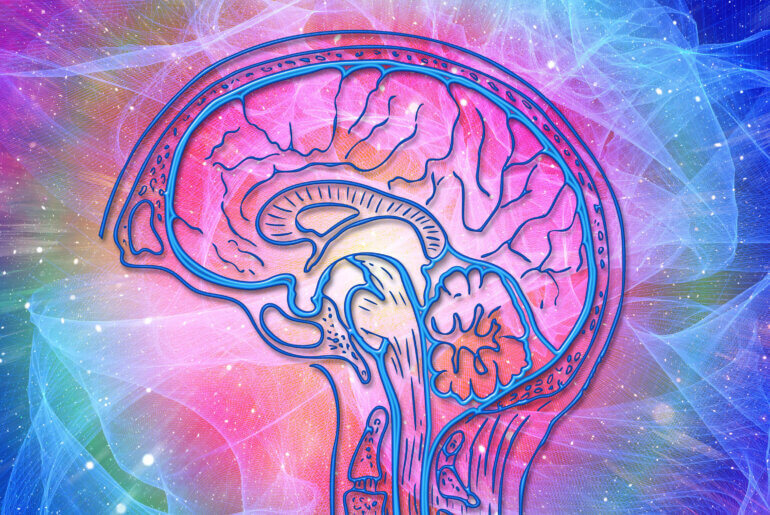Ketamine may ease depression by restoring the brain’s sensitivity to prediction error, study suggests
4 Years, 3 Months, 4 Weeks, 1 Day, 2 Hours, 52 Minutes ago

New research suggests that electrophysiological brain signals associated with neural plasticity could help explain the rapid, antidepressant effects of the drug ketamine. The findings, European Neuropsychopharmacology, indicate that ketamine could reverse insensitivity to prediction error in depression.
In other words, the drug may help to alleviate depression by making it easier for patients to update their model of reality.
“Ketamine is exciting because of its potential to both treat, and better understand depression. This is largely because ketamine doesn’t work the way ordinary antidepressants do – its primary mechanism isn’t to increase monoamines in the brain like serotonin, and so ketamine gives us new insight into other potential mechanisms underlying depression,” said lead researcher Rachael Sumner, a postdoctoral research fellow at The University of Auckland School of Pharmacy.
“One of the major candidates for the mechanisms underlying ketamine’s antidepressant properties is how it increases neural plasticity. Neural plasticity is the brain’s ability to form new connections between neurons and ultimately underlies learning and memory in the brain.”
“Rodent studies have consistently shown that ketamine increases neural plasticity within 24 hours,” Sumner said. “However, there are major challenges when attempting to translate what we know occurs in rodents to determine if it occurs in humans. Sensory processing mechanisms of plasticity, like the auditory process we examined in this study, provide an important means to meet this challenge of translation.”
The double-blind, placebo-controlled study included 30 participants with major depressive disorder who had not responded to at least 2 recognized treatments for depression. Seven in 10 participants demonstrated a 50% or greater decrease in their depression symptoms one day after receiving ketamine.
“In this case we used what’s called an ‘auditory mismatch negativity’ task to assess short-term plasticity and predictive coding, or the brains adaptability and tendency to try to predict what’s coming next,” Sumner said.
The researchers used electroencephalogram (EEG) technology to measure brain activity as the participants listened to a sequence of auditory tones that occasionally included an unexpected noise. The brain automatically generates a particular pattern of electrical brain activity called mismatch negativity (MMN) upon hearing an unexpected noise.
Sumner and her colleagues found that ketamine increased the amplitude of the MMN several hours post-infusion, suggesting that the drug increased sensitivity to prediction error.
“We found that just 3 hours after receiving ketamine the brains of people with moderate to severe depression became more sensitive to detecting errors in its predictions of incoming sensory information,” she told PsyPost.
“To provide context, the brain creates models or predictions about the world around it and what is most likely to come next. This is largely thought to be because it is an efficient way to deal with the massive amount of information hitting our senses every moment of the day. When something is constant and stable in the world these models can become very rigid. It has been suggested that these models can become too rigid and unchanging, underlying negative ruminations and self-belief that people with depression often report.”
“As an example of how this might look in depression — it is often easy for friends and family to point out to their loved one errors or the harm in their thought patterns,” Sumner explained. “A counsellor will often work with a person to change their harmful ruminations or beliefs, such as with cognitive behavioral therapy (CBT). However, the person experiencing depression may find this difficult to see, or to take on because of how rigid their models (belief about themselves, the world around them, their future) have become.”
The participants also completed a visual task to measure long-term potentiation (LTP), the ability of neurons to increase communication efficiency with other neurons. An analysis of that data, published in Biological Psychiatry: Cognitive Neuroscience and Neuroimaging, found evidence that the antidepressant effects of ketamine were associated with enhanced LTP.
“Ketamine may be working by increasing plasticity (the ability to adapt and learn new things), as well as increasing the brain’s sensitivity to unexpected external input that is signaling errors in its own rigid expectations,” Sumner said.
The main limitations of the new research are the lack of a control group and relatively small sample size. But Sumner and her colleagues hope that their future research will shed more light on whether ketamine can help to defeat harmful cognitions.
“The task we used involves presenting beeps through some headphones, and while it provides a highly controlled way to measure plasticity and sensitivity to unexpected input, it is pretty far removed from the complexity of the experience of depression itself. The next study should replicate our finding, and aim target and relate the change in the mismatch response and connectivity to higher level brain functions,” Sumner told PsyPost.
“Building on this finding may help provide evidence for the use of ketamine to facilitate or enhance people’s ability to engage with and benefit from therapies like CBT, by putting the brain into a more plastic state, ready to update its models.”
The study, “Ketamine improves short-term plasticity in depression by enhancing sensitivity to prediction errors“, was authored by Rachael L. Sumner, Rebecca McMillan, Meg J. Spriggs, Doug Campbell, Gemma Malpas, Elizabeth Maxwell, Carolyn Deng, John Hay, Rhys Ponton, Frederick Sundram, and Suresh D. Muthukumaraswamy.